
Today, HubSpot announced a milestone of more than 1,000 integrated apps featured in the app marketplace for its CRM platform. The call to better integrate martech is being heard.
As you may know, I joined HubSpot a little over four years ago to help grow its platform ecosystem. So I’m delighted to see this momentum build. And I feel like it’s still in the early stages of what it will become. A huge “thank you” to all of our partners driving this forward.
But for this blog, which I try to keep agnostic about the larger industry, I thought this might be a good moment to reflect on what I’ve learned along the way in this mission to better integrate martech. I think these five lessons apply to most marketing platforms.
1. We can do this, and it’s a competitive advantage
For years, marketing has been consistently asking for better integration among the apps it uses. In survey, after survey, after survey, and so on. We want the freedom to choose from the martech landscape, but we also need everything to work together.
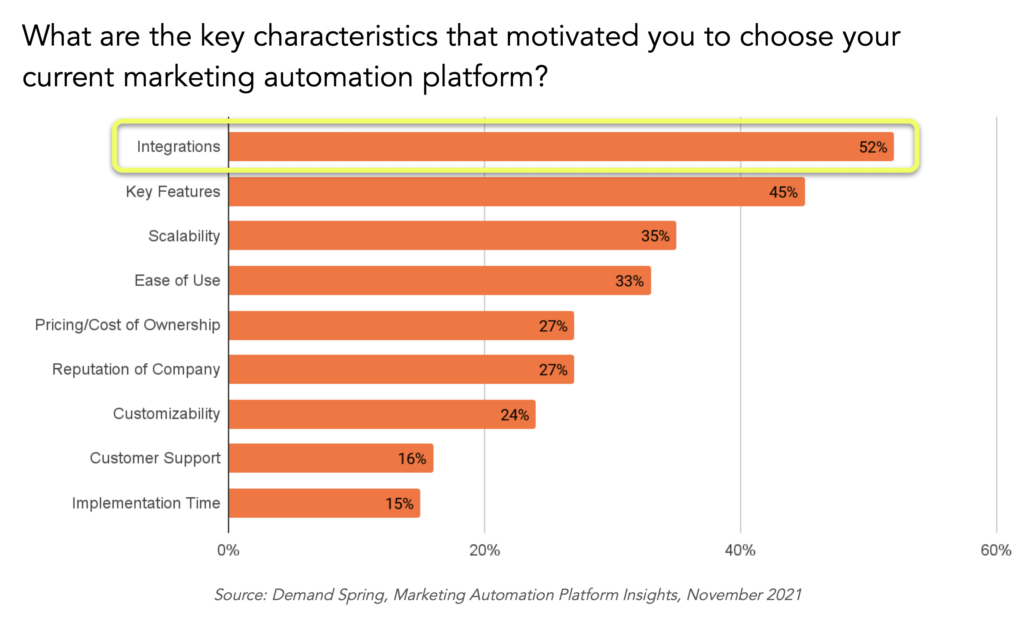
The good news: this is doable. If the old Dilbert joke was that marketing is just liquor and guessing, then martech is just APIs and coding.
But seriously, with almost everything in the cloud and almost all of that built on API-driven architectures — at least internally, if not always fully exposed externally — there aren’t massive technical barriers to integration. It’s mostly a question of product prioritization: is building a great integration a feature investment worth making?
As martech buyers tell martech sellers that it’s a factor their purchasing decision hinges upon, martech product managers respond by prioritizing integrations accordingly. And then happily market it as a competitive differentiator.
I’ve seen this play out many times in the HubSpot app ecosystem. If there are several competitors in a category who all integrate with our platform, the one who creates the best integration pulls ahead of the rest. Of course, this helps motivate their competition to follow suit. And the bar for integration quality keeps rising for all of us.
For marketers, having martech apps and platforms vigorously compete with each other for who can provide them the best integrated solutions is a wonderful thing.
2. Not all integrations are created equal
Of course, to have products competing with each other for the better integration, you need to have a wide range of possible ways in which those products might integrate. Luckily, the feature space for integrations is large.
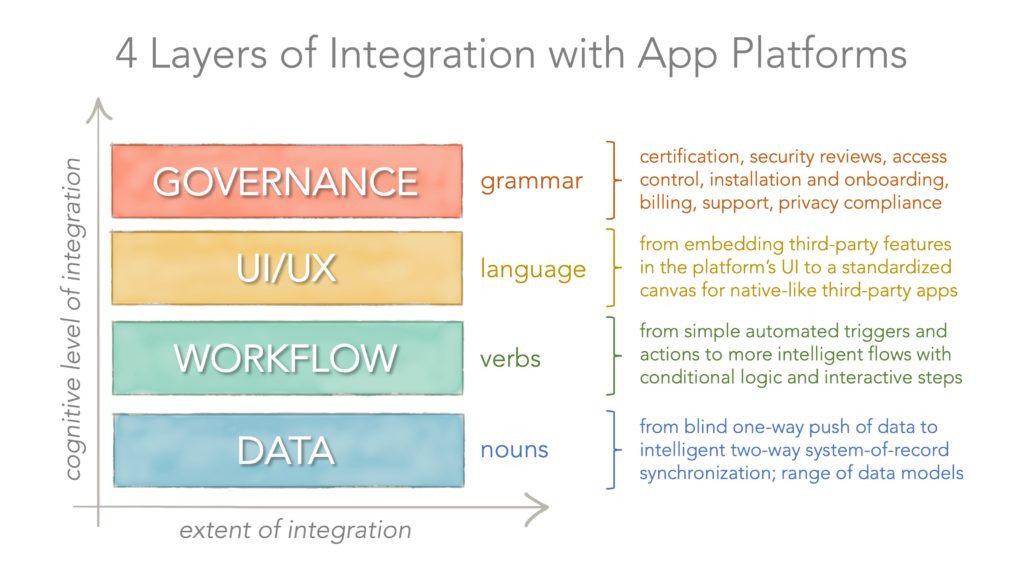
A few years ago, I described the above model of four layers of integrations — data, workflow, UI/UX, and governance. I still dig the metaphor of data as nouns, workflow as verbs, UI/UX as a common language, and governance as the rules of good grammar. Marketing operations uses these elements to write crackling sharp rhetoric. With the, um, occasional overextended metaphor. (cough)
At each layer, you can have shallow or deep integrations. For instance, a shallow data integration might just blindly send a limited amount of information one-way. A deep data integration would include more data objects in a bi-directional sync, with more control over exception handling.
Evaluating an integration between two products isn’t simply a yes/no checkbox. Far better to consider how the products work together through the lens of specific use cases.
3. Combinatorial innovation is an epic force
Specific use cases are where integrations really come to life. Concrete examples that make marketers exclaim, “Wait, we can do that?! That is awesome!”
Often the most interesting use cases are ones that weren’t even possible until the two products came together. For instance, if you combine an LMS (learning management system) with a CRM platform, suddenly a whole set of possibilities opens up…
Drive the right educational content to customers at the right time. Use progress in learning modules to trigger sequences to participants or to segment them for future personalized campaigns. Or reference employee certifications with in-house courses to determine lead routing or ticket routing to the best rep. And so on.
The exponential nature of combinatorial innovation guarantees a nearly unlimited set of possibilities. Often the first couple of use cases that initially drive demand for the integration turn out to be the tip of the iceberg.
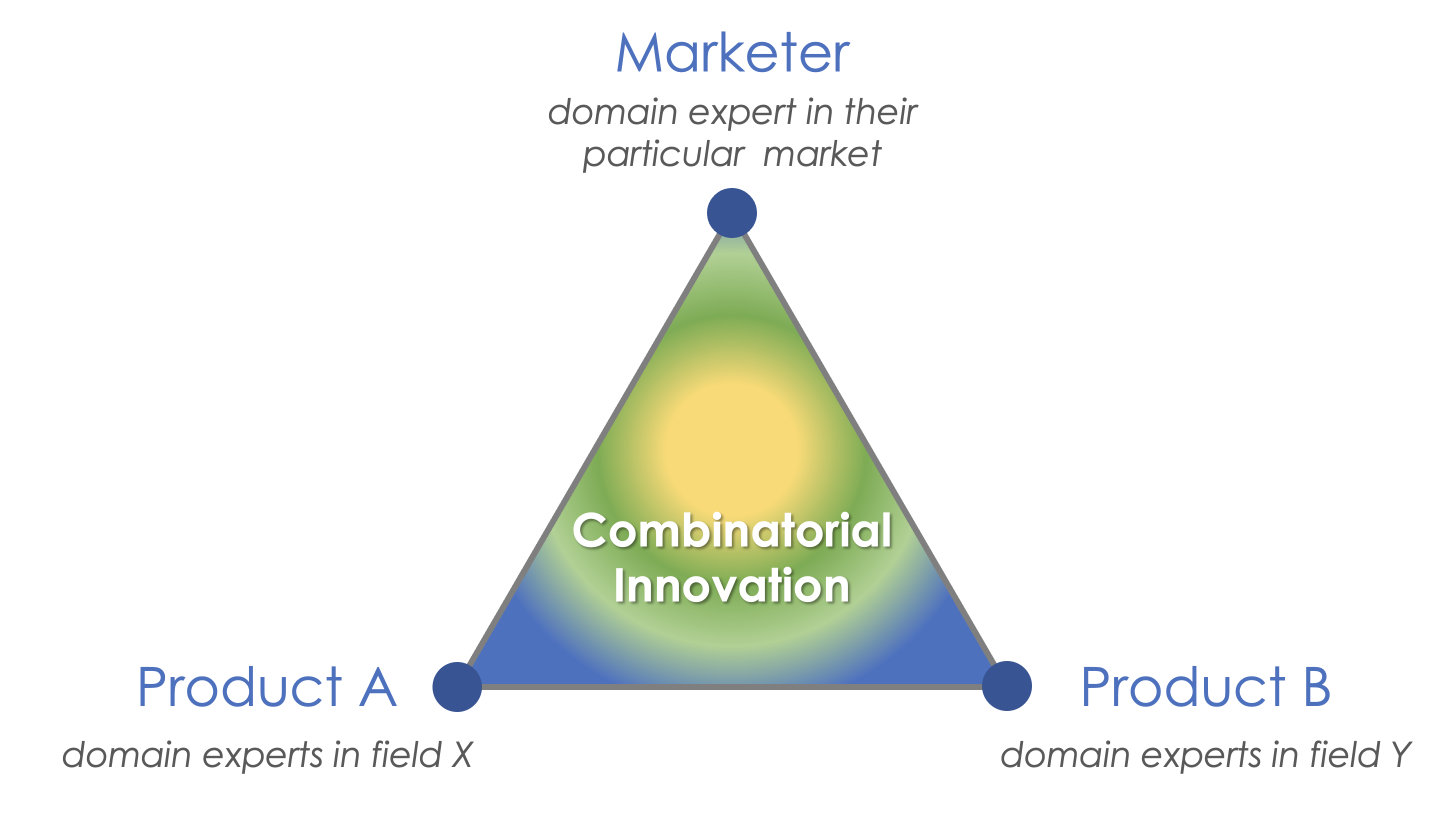
Integrations are epicenters for innovation because they intersect the domain expertise of each product — but also the domain expertise of the company using the integration.
In great platform ecosystems, there’s a feedback loop between all three parties. Creative uses by customers inspire new features for the integration by the product providers, who are also each learning from each other. These new use cases then become codified and templated to make it easier for more customers to capture value through the integration. In turn, those customers bring their own creative ideas from their market to the mix. And a positive feedback loop of continuous innovation ensues.
4. The long tail is where the magic is
Most of the media and analyst coverage in martech is on public companies and private unicorns in the space. But it’s the long tail of thousands of martech startups and specialist apps where the magic is.
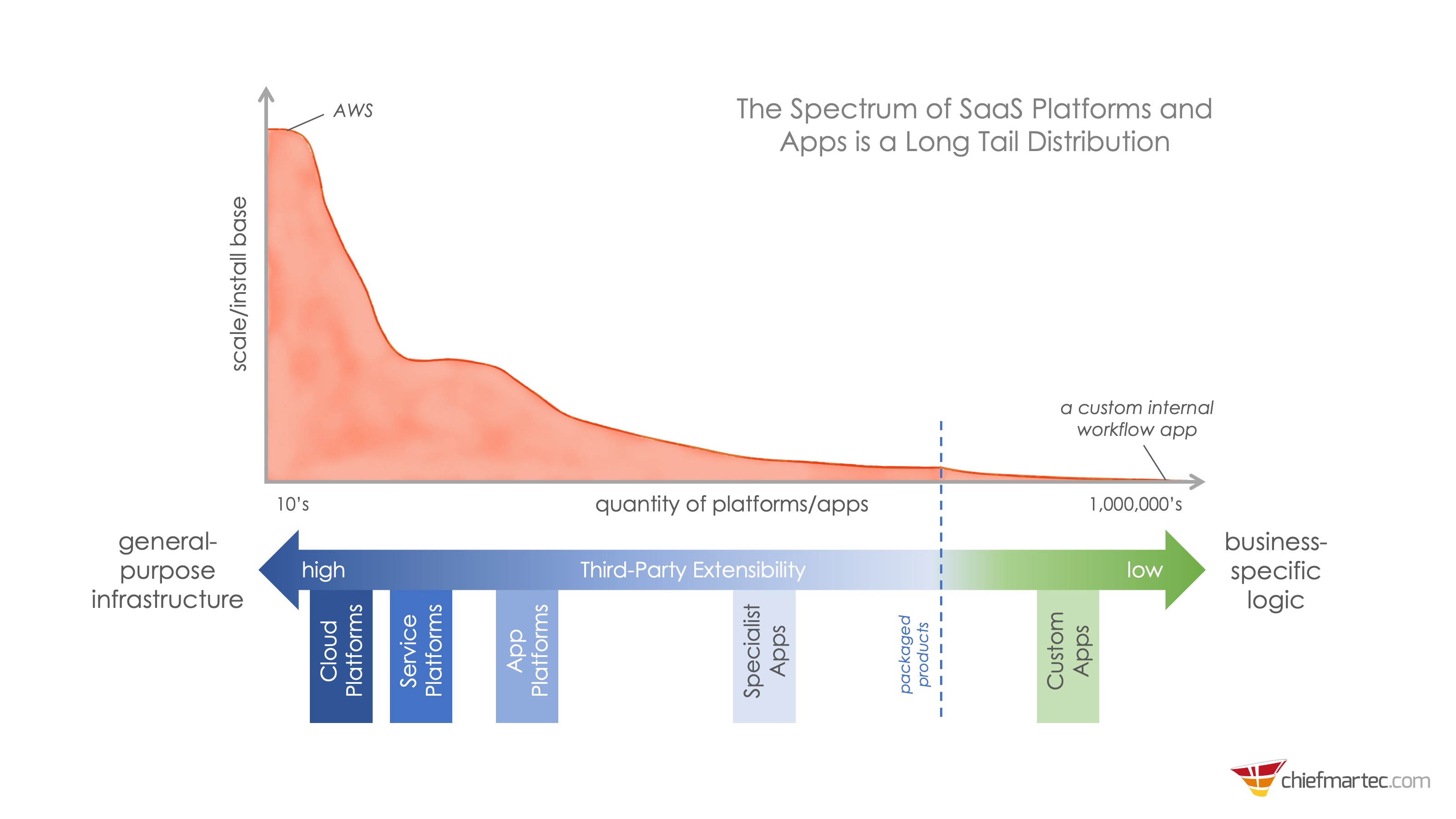
Why? There are generally two reasons why people launch startups in the long tail of martech.
One, they see a very particular niche — functional, vertical, novel, etc. — that they can tailor fit a solution for. Because of their specialized focus, they can build a product for that niche that wouldn’t necessarily make sense for a larger martech firm to address because the total addressable market (TAM) for that specialization is comparatively too small. But for a smaller company, that TAM can be an attractive, profitable business.
There’s a wonderful synergy between these specialist apps and larger app platforms. The app platforms provide the broad foundation on top of which a specialist app can narrow their focus. The app platform’s marketplace — and they all have marketplaces now — provides a channel by which those specialist apps can efficiently reach their target audience. In turn, the specialist apps make it possible for the generalist app platform and its partner ecosystem to collectively address the needs of a very large and diverse customer base.
For an excellent example of a specialist app that’s an amazing product tailored for coordinating account-based sales, check out OrgChartHub. It’s a pretty magical experience.
The other reason people launch startups in martech is because they aspire to disrupt the large martech companies. Now, this is a hard mission. Given the incredibly noisy martech space, gaining enough traction to scale to billions in revenue is like free soloing El Capitan. Only a few will make it.
But it’s because of those long odds that the startups pursuing that goal often bring an entirely new and innovative approach. They have to in order to stand out. And even if they don’t make it to the very head of the tail, they can change the way the industry evolves.
Either way, the long tail is where the magic is.
5. Coopetition benefits everyone
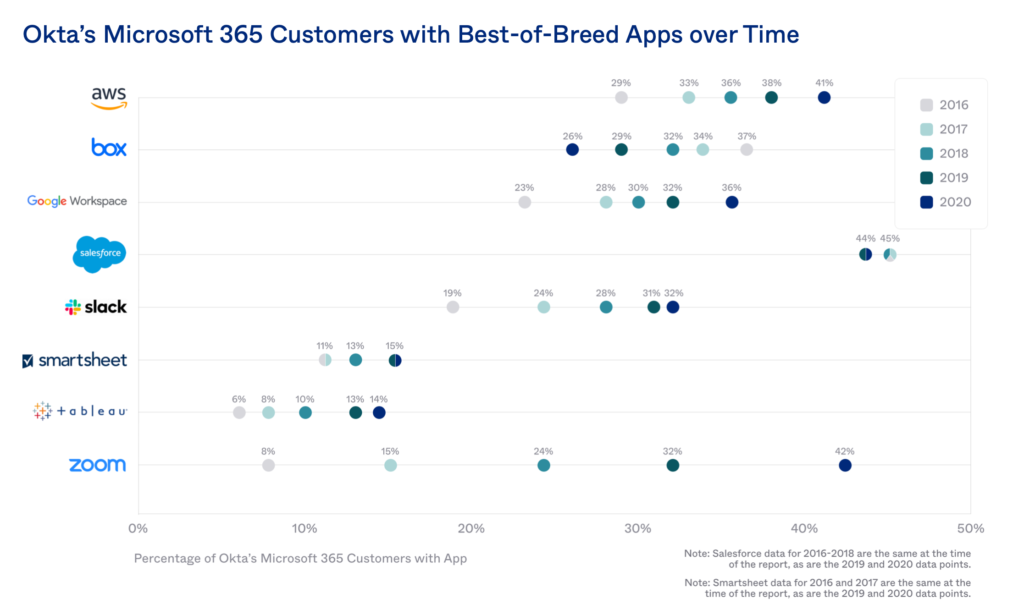
There’s a lot of martech. And a lot of overlaps between products. At least with the high-level elevator pitch. In truth, even if you have 100 companies that provide, say, customer chat platforms, the way in which each builds that capability and shapes the experience for both its customers and its customers’ customers is going to vary considerably. There is an infinite canvas for martech differentiation.
This is one of the reasons why marketers prefer best-of-breed stacks. Even if they use one primary platform as the backbone of their stack, with a bunch of the core functionality they need, they still want the freedom to choose a product from a different vendor for some piece of their puzzle.
A great integration between two products that have competitive overlap can actually make their mutual customers happier with both of them.
This works best when each of the product companies embrace coopetition. “Yes, we compete in these ways. But there’s opportunity for us to cooperate in these others.” They don’t lock each other out of access to their respective APIs. They don’t exclude them from their marketplaces. They may even do joint marketing together. Because they’re focused more on making customers happy than playing Highlander (“There can be only one!”).
In a world eaten by software, integration takes us into greatness.


